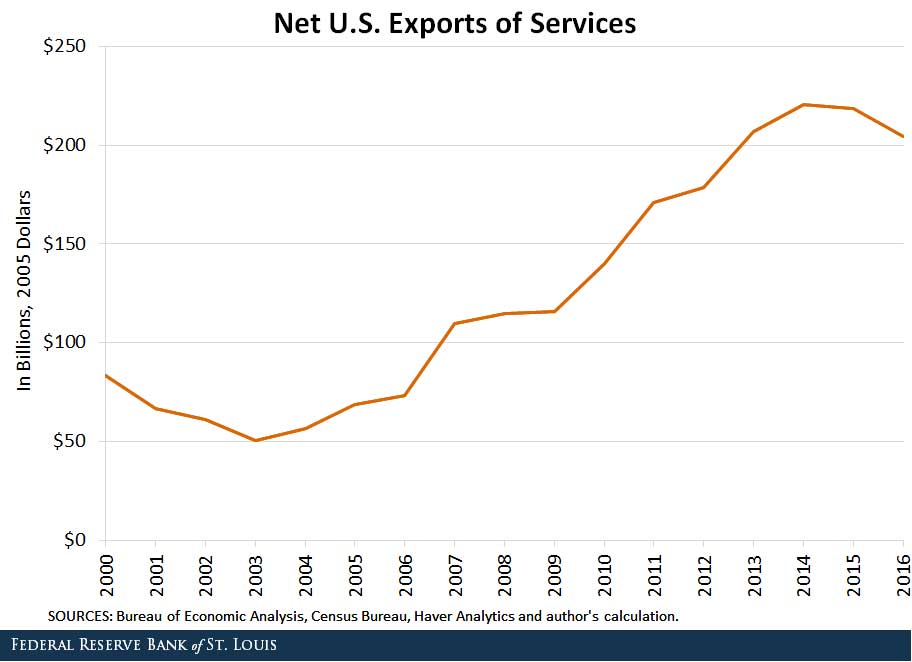from the St Louis Fed
— this post authored by Ana Maria Santacreu
The U.S. has a trade deficit in goods and services with the rest of the world. That is, the value of its imports exceeds the value of its exports. In 2016, the U.S. trade deficit with the rest of the world was $416.7 billion.[1]

However, this deficit has been driven entirely by a trade deficit in goods. The U.S. is actually a net exporter of services and has experienced a sharp increase in the surplus of trade services since the 2000s, despite a mild decrease after 2014.
Indeed, between 2000 and 2016, the trade surplus in services in the U.S. increased by 145 percent in real terms, as seen in the figure below.

Main Contributors to the Trade Surplus in Services
The main contributor to the surplus in services has been payments for intellectual property rights, which had a surplus of $66.1 billion in 2016. These payments are mainly royalty payments that foreign companies and institutions make to use U.S. technologies.
In a previous blog post, I documented how the U.S., being one of the most innovative countries in the world, is also an important source of technology transfer to other countries. An important part of this technology transfer is reflected in payments for U.S. intellectual property from the rest of the world.2
After 2015, however, travel services became the main contributor of the surplus, surpassing the surplus of payments for intellectual property rights. A key factor of this trend has been trade in health travel services (that is, “medical tourism”), reflecting an increase of travelers coming to the U.S. in search of the high-quality services of the U.S. health system, despite its rising costs.3 In 2016, the trade surplus in travel services was $67.9 billion.
The third contributor to the trade surplus is financial services, with a surplus of $59.9 billion in 2016. The U.S., however, is a net importer of insurance services, transport, and telecommunications, computer and information services.













Leave A Comment